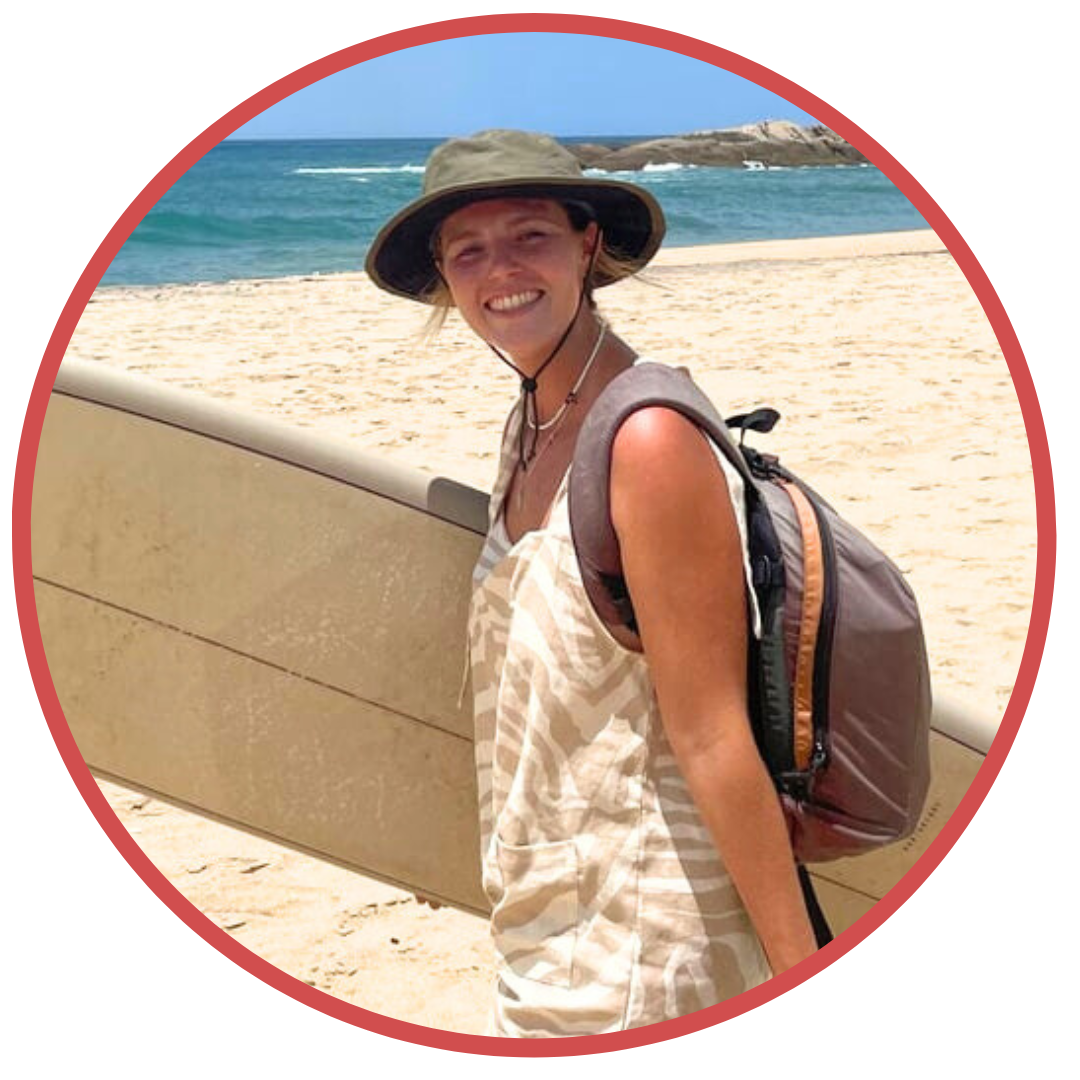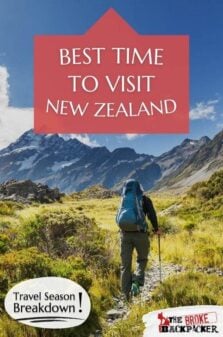The mystical land hidden away at the bottom of the world (New Zealand, as we like to call it) is one of those places that people spend their lives dreaming about. Home to majestic mountain peaks that transcend you into Lord-of-the-Rings, pristine beaches and ridiculously friendly locals.
New Zealand is one of those countries that SERIOUSLY has it all, especially when it comes to adventure. Whether you want to tear up the slopes, traverse the highest peaks or carve up in the surf – there is an adventure waiting for you.
If you’re not planning to embark on the wild side of New Zealand, but instead craving a tranquil escape, New Zealand has your back. It will fill you up with some of the best food and wine on the planet and provide you with “pinch-me” landscapes to marvel.
New Zealand has come pretty varied seasons, To make the most of your trip, you’ll want to know when it is the best time to visit New Zealand is for YOU based on your travel dreams and of course, your budget.
Lucky for you, you have your local Kiwi guide to help you out (that’s me!) I’ve experienced all the seasons Mother Nature’s thrown New Zealand’s way throughout my 27 years growing up there and I’m here to spill the tea on the best times to visit New Zealand.
So, let’s dive in and find out more.
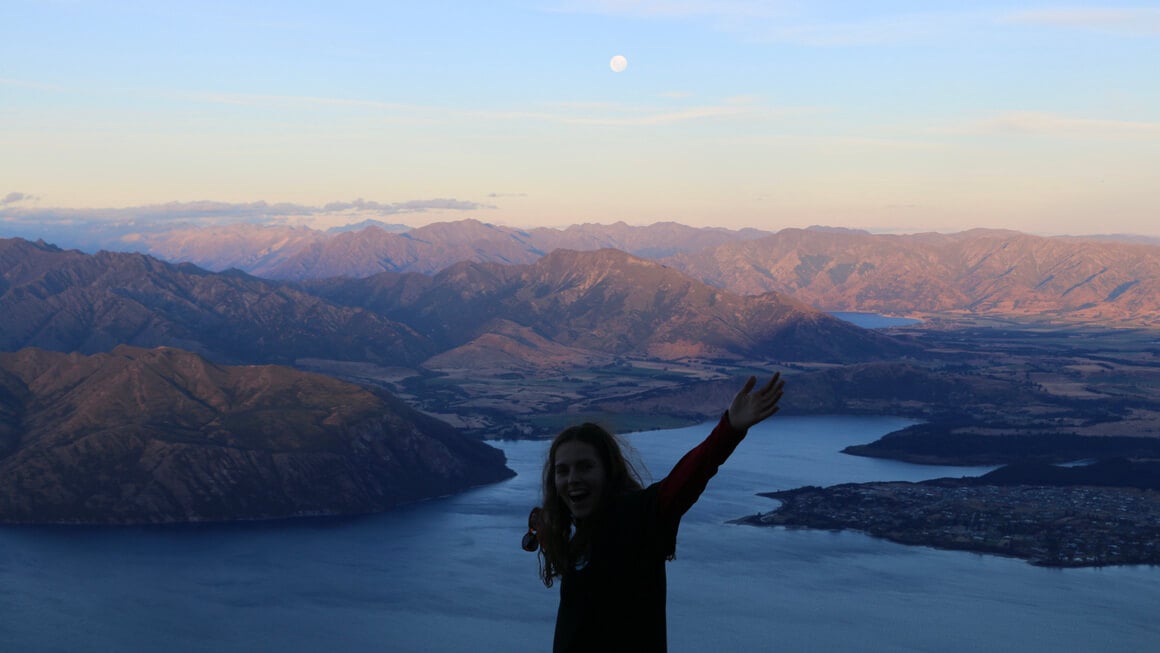
Photo: @danielle_wyatt
Best Time To Visit New Zealand – February
Best Time To Go To Wellington – March to May
Best Time For Queenstown – September to November
Best Time For The Beach – December to March
Best Time For Sightseeing – December to March
Cheapest Time To Visit New Zealand – March to May, September to November
- When is the Best Time to Visit New Zealand?
- Cheapest Time to Visit New Zealand
- When to Visit New Zealand – Weather By Month
- Best Time to Visit New Zealand by Place
- Best Time to Visit New Zealand for Parties and Festivals
- FAQs About The Best Time To Visit New Zealand
- Final Thoughts on The Best Time to Visit New Zealand
When is the Best Time to Visit New Zealand?
The best time to travel to New Zealand completely depends on you and what you’re interested in. If you’re planning to tear up the slopes, then your best time to visit New Zealand will be the winter. However, if you’re dreaming of soaking in the sunshine and beaches, Summer is for you.
Generally speaking though, summer is regarded as the best time to visit New Zealand. Between December and March, you can expect long, bright days that are warm and full of sunshine.
The temperatures hover between 61 and 75 °F (16 and 24 °C) and are perfect for shaking off the winter layers and hitting the beach, swimming in the crystal blue lakes, or trekking New Zealand’s EPIC hiking trails. Ask any Kiwi, a New Zealand summer is INSANE.
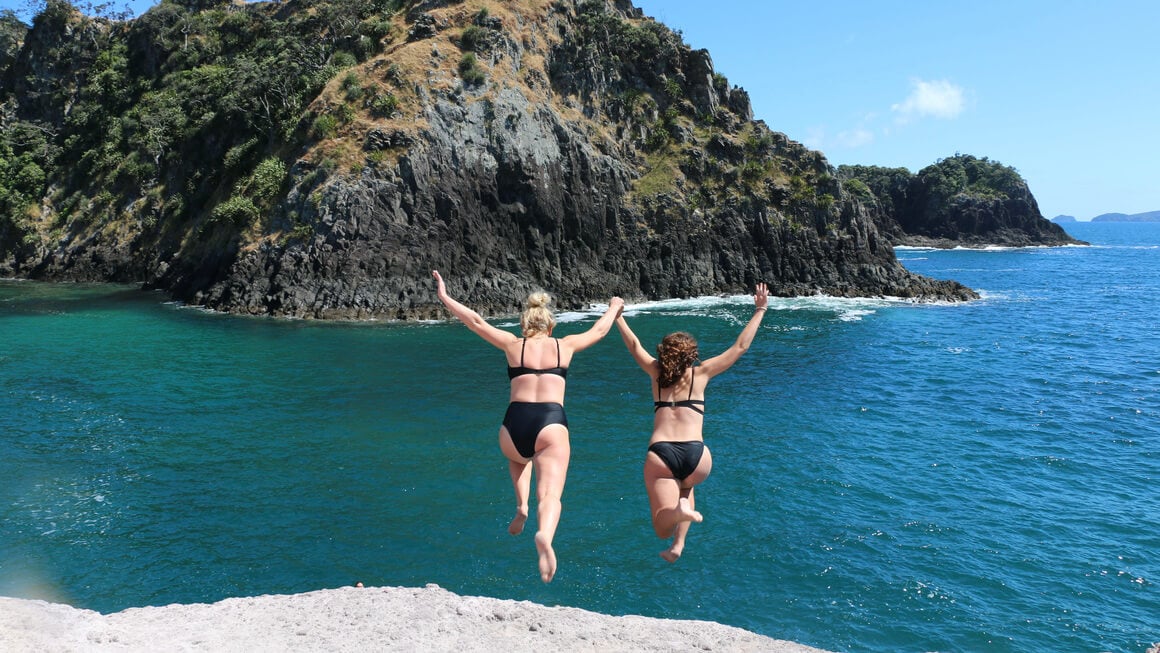
Photo: @danielle_wyatt
The peak tourist season coincides with the summer months and during this time Kiwis often take a couple of weeks off too. And if there is one thing Kiwis are good at, it’s exploring their backyard. So, you’ll be travelling this marvellous land alongside its locals, who can give you New Zealand travel tips and tricks.
The low season falls between June and October, give or take, every year. This coincides with the winter months and is the BEST time to visit New Zealand if you’re a winter sports enthusiast. If you travel to New Zealand during the winter, you have to catch a game of Rugby or hit the slopes for snowboarding, skiing or even tobogganing!
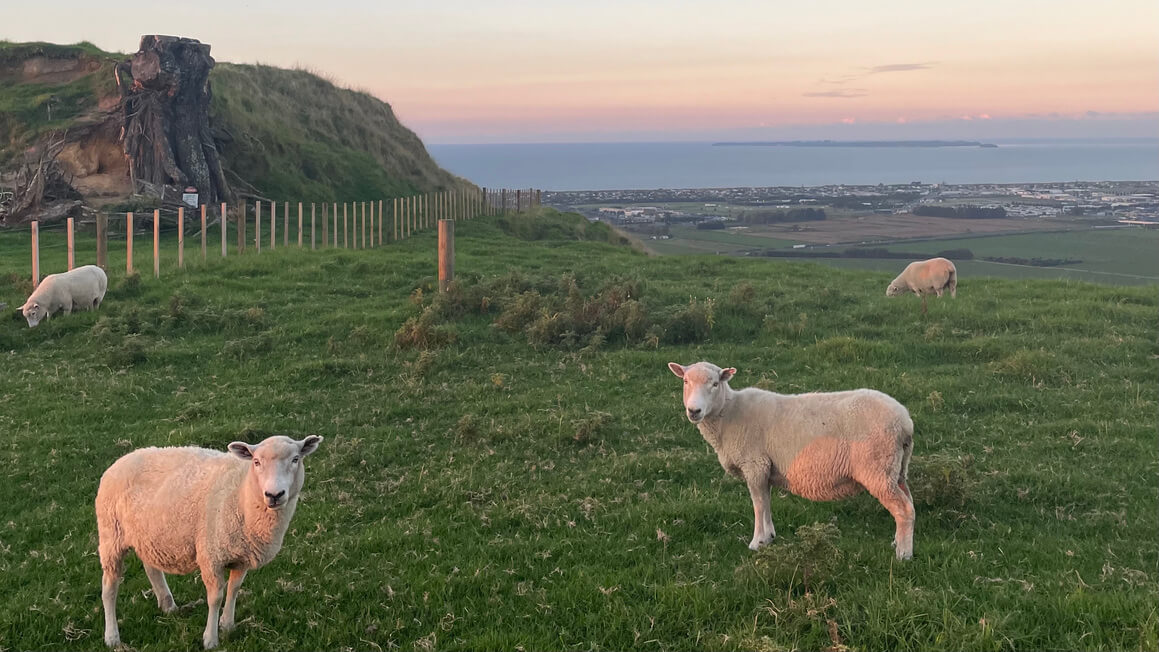
Photo: @danielle_wyatt
You can also generally find yourself a sweet deal on a place to stay in New Zealand during this time, provided it’s not in a resort town. Remember, this is their peak time of the year and accommodation can be pricey.
The shoulder seasons fall between March and May (autumn) and again between September and November (spring). They can be some of the best times to visit New Zealand as the weather is still fair but you can land a decent deal on accommodation. And as you can probably tell by our name, we luuuurve a good deal.
Spring and autumn are also not as busy with tourists so you can enjoy many of the usual summer activities without the crowds!
Spring is a particularly exciting time in the country as the temperatures start to warm up and the days get longer after the cold winter months. And it’s one of my personal favourites as it’s the lambing season! So you get to see lots of cute baby sheep around the place.
Cheapest Time to Visit New Zealand
Right, when it comes to the cheapest time to visit New Zealand, the months of June to October come out tops. It’s the winter season in the country and by far the cheapest time to travel. Especially around the “summer hot spots” that quieten down a lot around this time of year.
However, skiing and snowboarding are popular wintertime activities, especially on the South Island. This means that resort towns (such as Wanaka and Queenstown) are in their peak season during the general off-season and prices remain high during this time.
The shoulder seasons are also an ideal time to visit the country. While New Zealand can be an expensive place to go, generally speaking, you can travel during this period without having to re-mortgage your house.
The weather in New Zealand is pretty decent during the spring (September and November) and autumn (March and May) seasons and so too are the prices. You can score some sweet deals and discounts on accommodation during this time, making it one of the best times to visit New Zealand on a budget.
When to Visit New Zealand – Weather By Month
If you’re in the midst of planning when you’re going to embark on your adventure to New Zealand, you’re probably after a month-by-month breakdown, right? Well, my friend, you’ve come to the right place.
I’m going to take you through each month and what the weather is like for each in New Zealand. There are differences between the North and South islands that might influence your decisions. Let’s take a look.
January in New Zealand
- Average Max. Temperature: 20.9°C, 70°F
- Rainfall: 6 days
January in New Zealand is both bright and sunny. It is one of the hottest months of the year on both the north and south islands and temperatures can even hit the high 20s and low 30s on summer days.
It’s the time of year when locals shake off their winter blues, take time off work and hit the best beaches in New Zealand. To say the vibes are HIGH during this time would be an understatement.
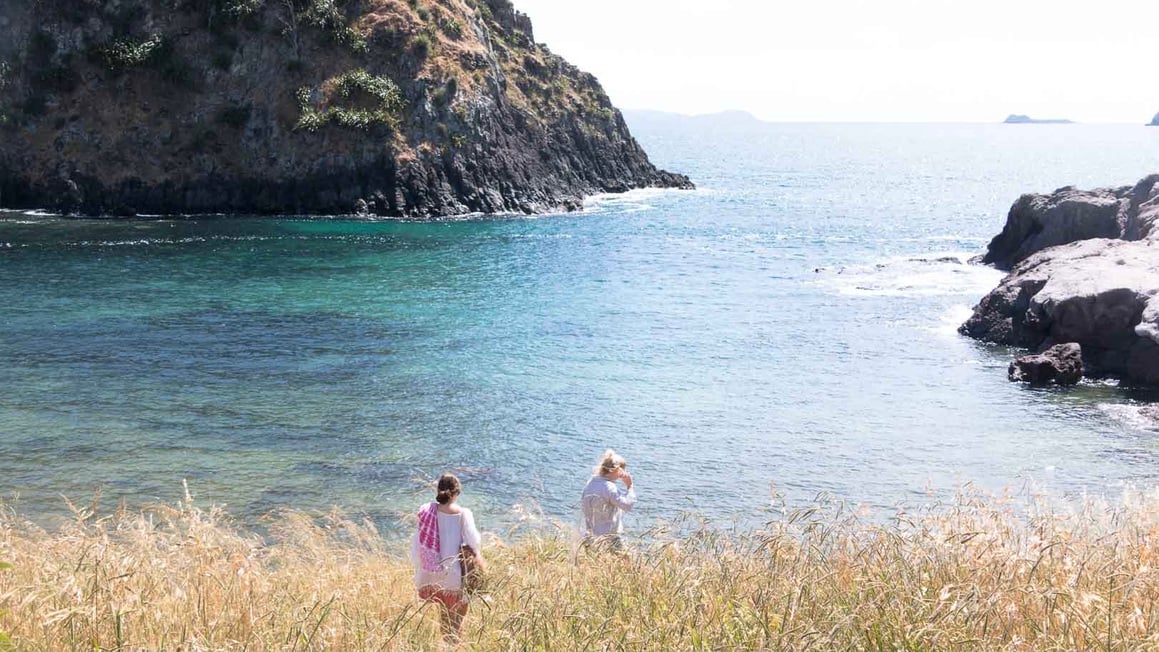
Photo: @danielle_wyatt
This, however, also tends to be one of the busier months of the year, with tourists and locals alike soaking in the warm days. January is often busy with many festivals and events. It’s also the perfect month for exploring one of New Zealand’s day hikes or trying your hand at surfing.
With all these crowds about, prices tend to be a bit higher during this time but you might be able to score yourself a post-Christmas deal or online store discount. So keep your eyes peeled!
February in New Zealand
- Average Max. Temperature: 21.2°C, 70°F
- Rainfall: 5 days
February is another incredible month in New Zealand and is considered the “final month of the summer” (however, the weather stays pretty warm right into March and April in the north).
The daily temperatures on both the north and south islands can still hit the mid 20s but the temperatures tend to drop a bit in the more mountainous regions.
February is also a great time for visitors to go camping as many of the locals tend to start returning home with the school term looming. It’s another perfect month to enjoy those outdoor activities.
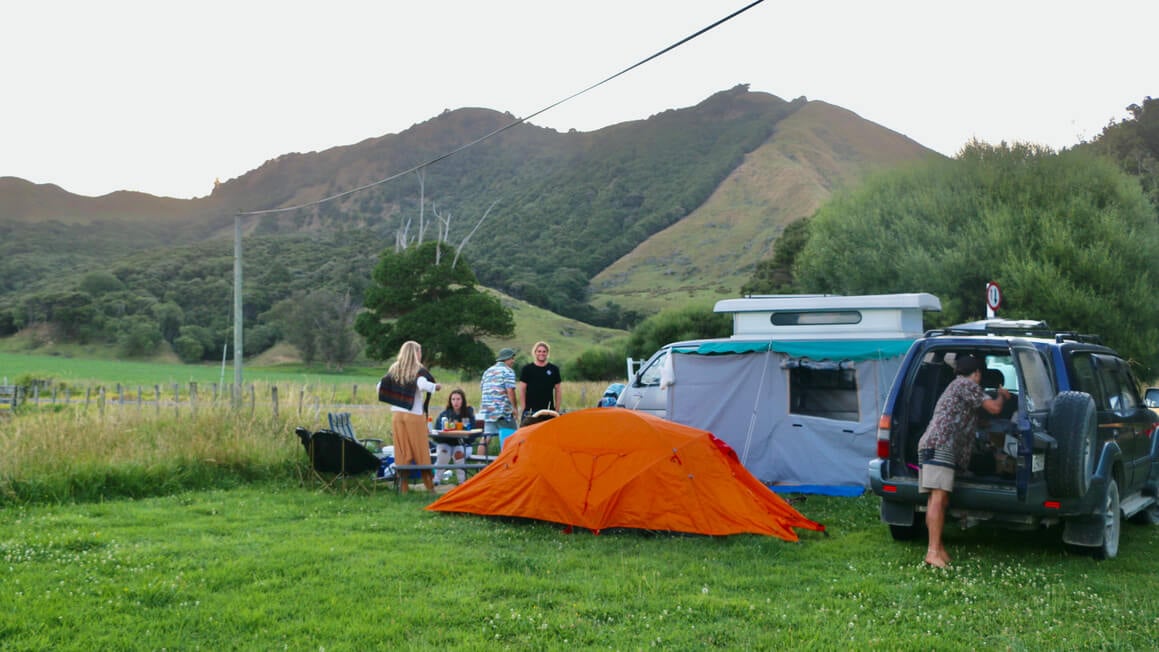
Photo: @danielle_wyatt
Caving and canyoning are popular during February, along with water-based activities such as canoeing, river rafting, and kayaking. Yep, I told you this was an adventurer’s paradise!
Prices still tend to be on the higher side in February but with accommodations and campgrounds freeing up, prices begin to drop and you can find a deal still.
March in New Zealand
- Average Max. Temperature: 19.6°C, 67°F
- Rainfall: 6 days
March is officially the first month of autumn/fall and the temperatures start to drop slightly. The north island, however, still experiences temperatures in the mid-20s which are still great for outdoor activities or maybe even a south island road trip.
Leaves start to change colour in autumn and you begin to get amazing contrasts in colour in the forests and landscapes. Who thought it could get even more beautiful?
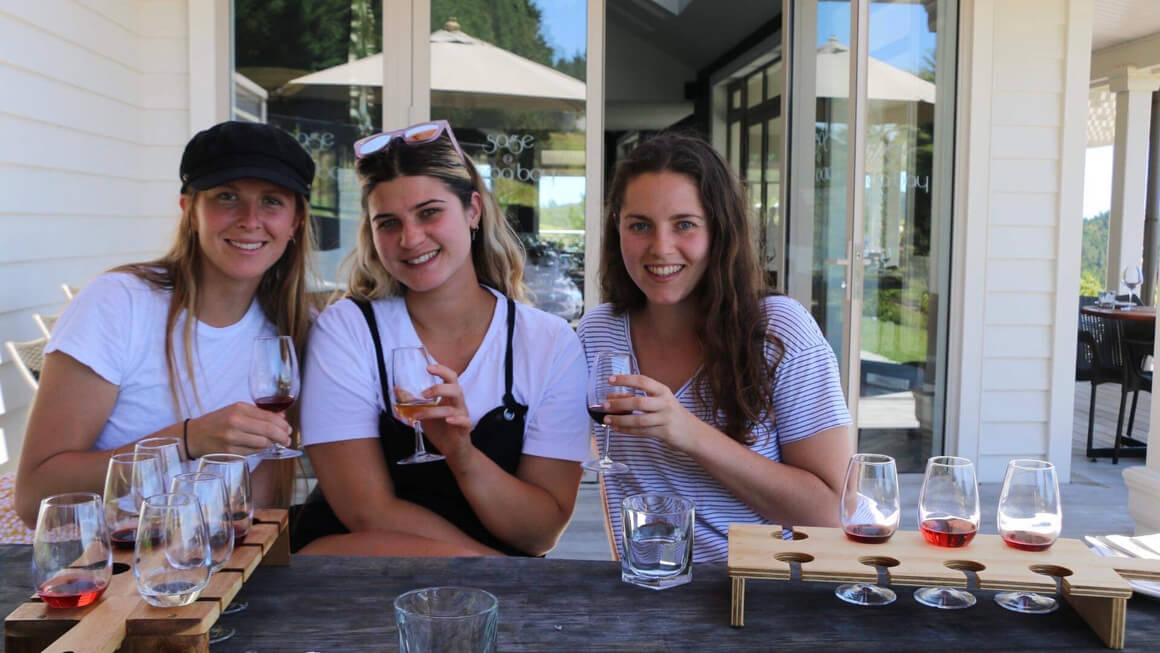
Photo: @danielle_wyatt
It’s also the perfect month to enjoy an afternoon of wine and go on a local winery tour. New Zealand makes some of the top Sauvignon Blanc and Pinot Noir in the world, just by the way. Waiheke is one of my favourite spots for experiencing New Zealand’s wine on a Waiheke Winery Tour.
April in New Zealand
- Average Max. Temperature: 17.2°C, 63°F
- Rainfall: 7 days
Autumn is really getting into full swing during April and you can expect clear blue skies and crisp sunny days. The nighttime temperatures tend to start cooling off and are complimented by clear skies.
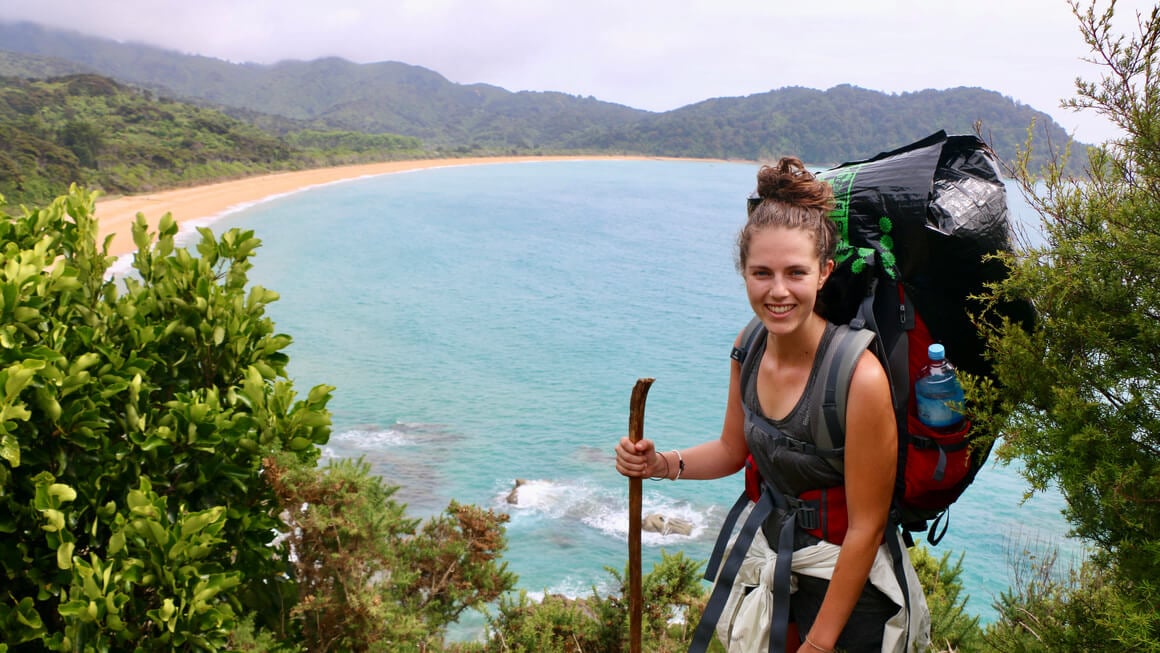
Photo: @danielle_wyatt
The weather is generally a bit up and down during April as it’s the changing of the seasons. It is, however, a great month for hiking in New Zealand along one of the many trails around the country, with slightly fewer crowds. There tend to be spells of great weather during the month, with little wind and rain.
I’d recommend packing a good pair of hiking boots. New Zealand is home to some of the best hikes in the world, you don’t want to miss out because you didn’t bring the right equipment. My favourite hiking boots are KEEN Targhee II Waterproof Mid-Hiking Boots.
May in New Zealand
- Average Max. Temperature: 15.4°C, 60°F
- Rainfall: 8 days
The temperatures really start to drop in May and it’s the official start of the cold months in New Zealand. Even during the day, the temperatures are low enough that warm clothes are required and the south island is chilly at this time.
It’s possible to do a spot of fishing up north still and hunting and mountain biking are popular sports during the month of May. Prices are also on the drop at this time as the country prepares for the winter cold.
June in New Zealand
- Average Max. Temperature: 13.2°C, 56°F
- Rainfall: 8 days
The cold weather starts to set in in June and it’s the official first month of winter in New Zealand. Both the north and south islands experience rain, with it more prevalent up in the north.
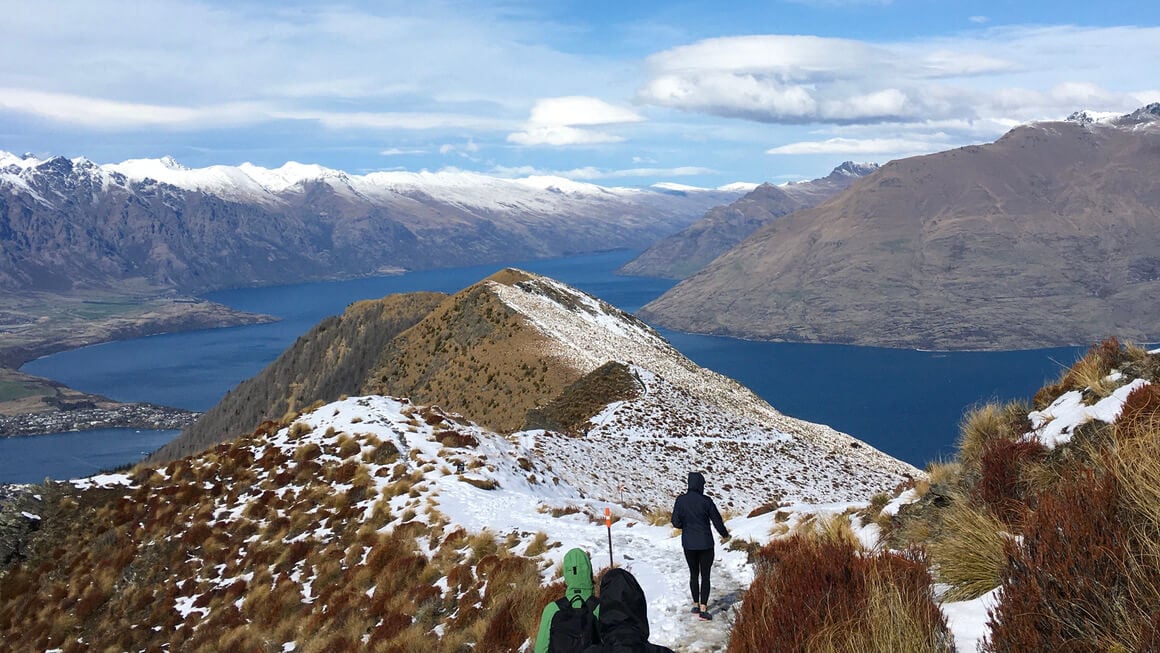
Photo: @danielle_wyatt
June is also the first time that the mountain ranges on both the north and south islands begin to get their first snow of the year. It’s the perfect time for those ski and snowboard enthusiasts to start dusting off their gear and prepare to hit the slopes.
July in New Zealand
- Average Max. Temperature: 12.4°C, 54°F
- Rainfall: 8 days
July marks the middle of winter and some of the coldest temperatures in the country. Although the weather can be rather uninviting outside, there are still plenty of things to do in New Zealand. There are a few winter activities and sights that are worth braving the cold for.
Tongariro World Heritage National Park is an EPIC place to go and ski on an active volcano. Pancake Rocks have natural geysers and blowholes and funny enough, the worse the weather, the better the show.
August in New Zealand
- Average Max. Temperature: 12.9°C, 55°F
- Rainfall: 7 days
Winter is still very much in full swing during August and it’s generally rather cold still across the country. The north island does start to warm up slightly, however.
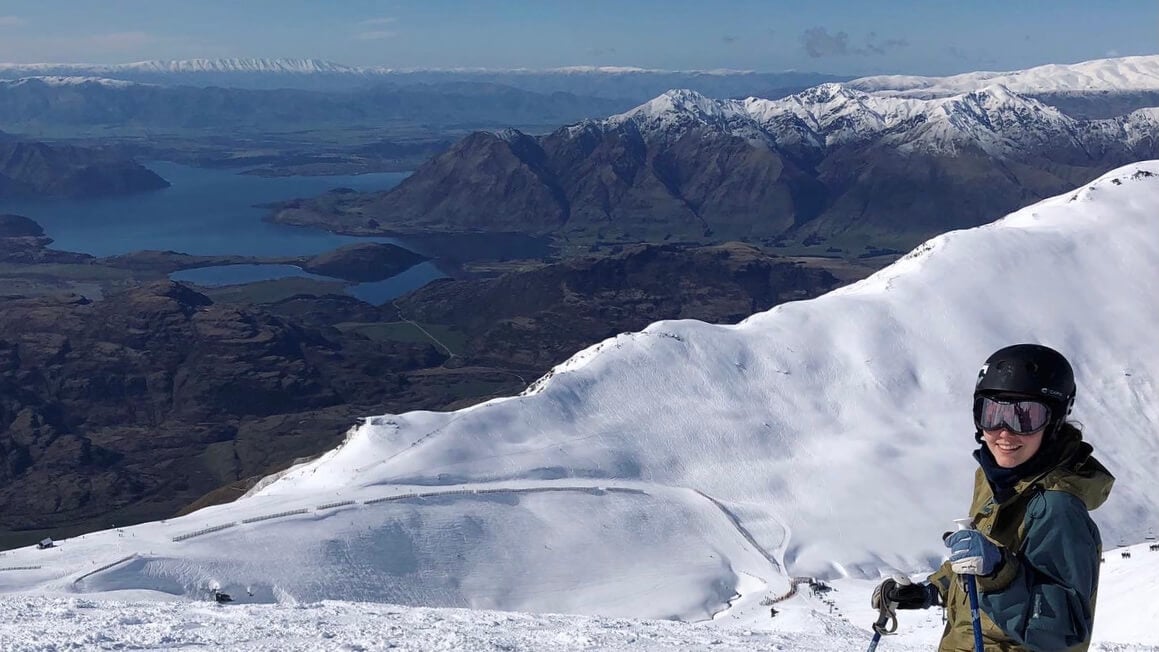
Photo: @danielle_wyatt
August is still a great month for skiers and snowboarders to hit the slopes and there is also the opportunity to go alpine climbing. If your budget allows for it, you can also go on a helicopter tour or fixed-wing plane ride – a great way to see the snow-capped peaks from above.
September in New Zealand
- Average Max. Temperature: 14.3°C, 58°F
- Rainfall: 6 days
September is the first official month of spring and the weather finally starts to warm up. The locals welcome the increase in temperatures and there is a real buzz in the air.
You can expect the usual spring conditions in New Zealand – warmer, longer days and more sunshine. The snow also begins to melt and there is some rain present but that doesn’t stop the many events from happening. So, you won’t be short of things to do.
October in New Zealand
- Average Max. Temperature: 15.7°C, 60°F
- Rainfall: 7 days
October is a great time to visit New Zealand as the temperatures are rising steadily, although it’s not summer just yet.
The temperatures are still relatively mild on both the north and south island but it’s the perfect time for horticulturists and garden enthusiasts alike. The spring colours are popping and the flowers are in full bloom – it’s really a magical time in the country.
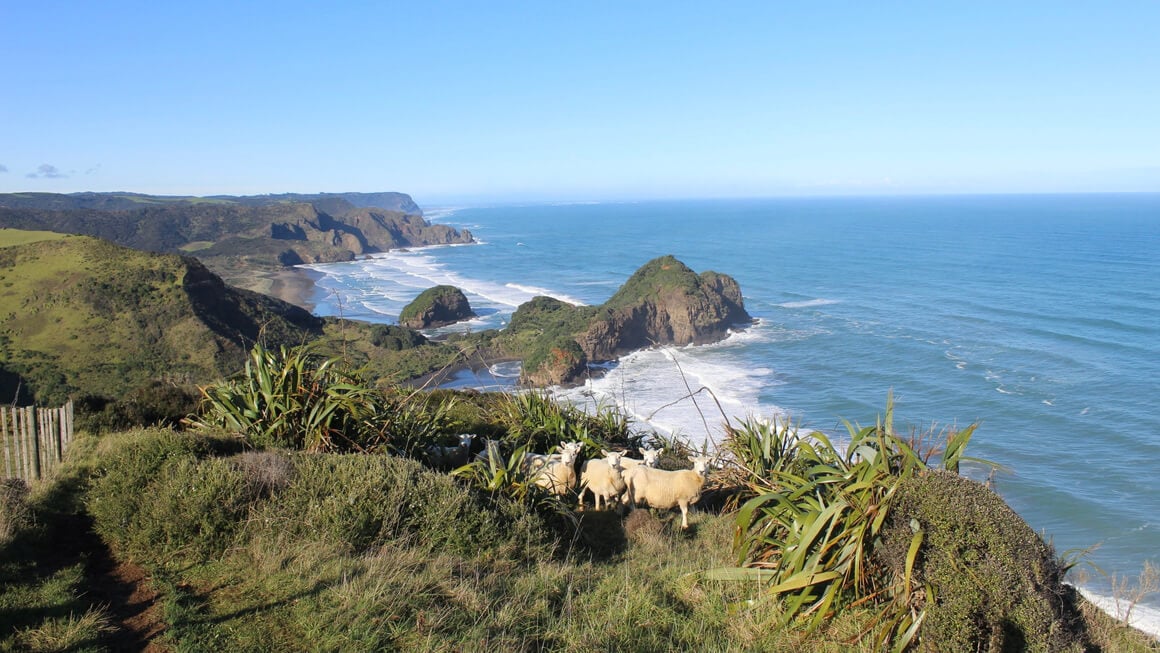
Photo: @danielle_wyatt
It’s also the time of the year for lambing, so you get to see lots of cute baby sheep around the place. Considering there are five times more sheep than humans in New Zealand, I’m sure you’ll see some!
November in New Zealand
- Average Max. Temperature: 17.4°C, 63°F
- Rainfall: 7 days
November is considered to be one of the favourite months to visit New Zealand. The tourist season hasn’t quite kicked off yet and the weather is almost perfect for most outdoor activities (with a few downpours here and there). I’d still pack a good rain jacket juuust in case you get caught out. I like to travel with my Arc’teryx Beta LT Jacket, it’s saved me many times.
The holidays haven’t started yet for the locals so you can still get yourself a sweet deal earlier on in the month so grab it while it’s there. There are also A & P shows happening throughout the country which are when the countryside comes into town – they are pretty epic to check out.
December in New Zealand
- Average Max. Temperature: 19.6°C, 67°F
- Rainfall: 7 days
December may be the last month of the year, but it’s the first official month of summer in New Zealand. The days are long, sunny, and warm, the nights are mild, and the living is easy.
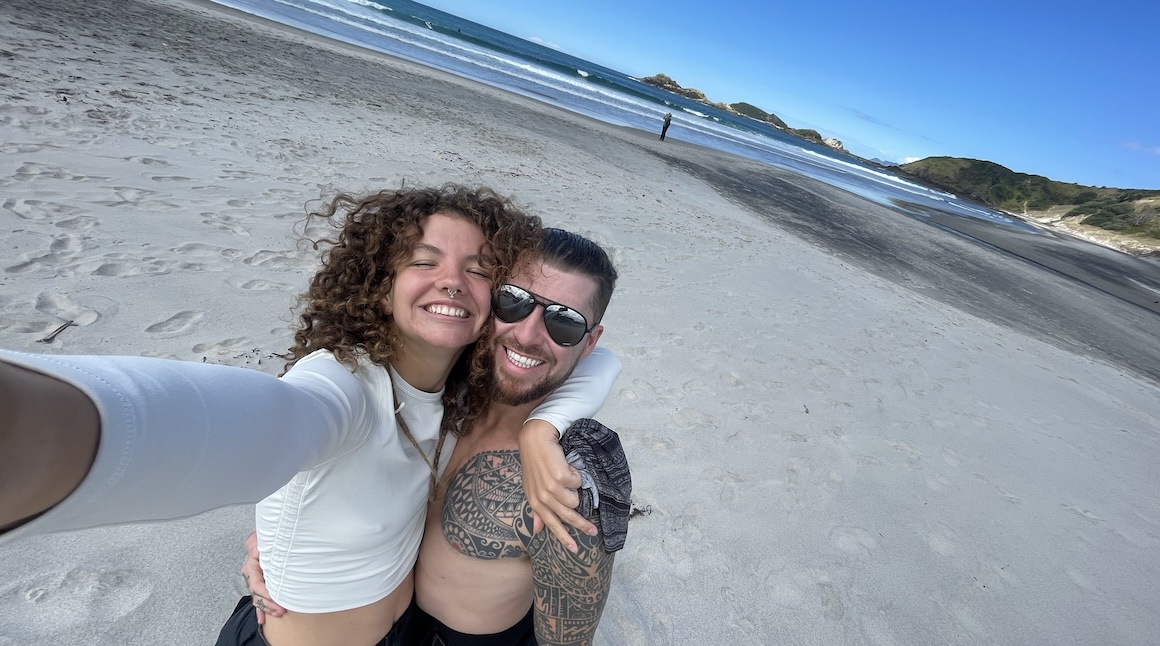
Photo: @audyscala
While Europe and America celebrate a cold Christmas with roast dinners and eggnog, the New Zealanders have a barbecue at home or on the beach. The warm weather means that beach days are a common occurrence as well as most outdoor activities like surfing, fishing, hiking, and mountain biking.
It’s also the peak busy season in the country so expect most prices to be inflated at this time of year.

A new country, a new contract, a new piece of plastic – booooring. Instead, buy an eSIM!
An eSIM works just like an app: you buy it, you download it, and BOOM! You’re connected the minute you land. It’s that easy.
Is your phone eSIM ready? Read about how e-Sims work or click below to see one of the top eSIM providers on the market and ditch the plastic.
Grab an eSIM!Best Time to Visit New Zealand by Place
Right, I’ve picked a few of the top cities to visit in New Zealand and when the best time to visit each of them is. They all have their own unique charm and attractions that make them worth visiting.
Let’s take a look below.
Best Time to Go to Queenstown
The city of Queenstown, located on the shores of Lake Wakatipu on the south island of New Zealand, is considered to be the adventure capital of the world.
From bungee jumping off Kawarau Bridge, to exhilarating, high-speed jet boat tours and white water rafting. It’s an adrenalin junky’s paradise! The best part of it all is that backpacking in Queenstown is great at any time of the year – it all depends on what you’re keen to get up to.
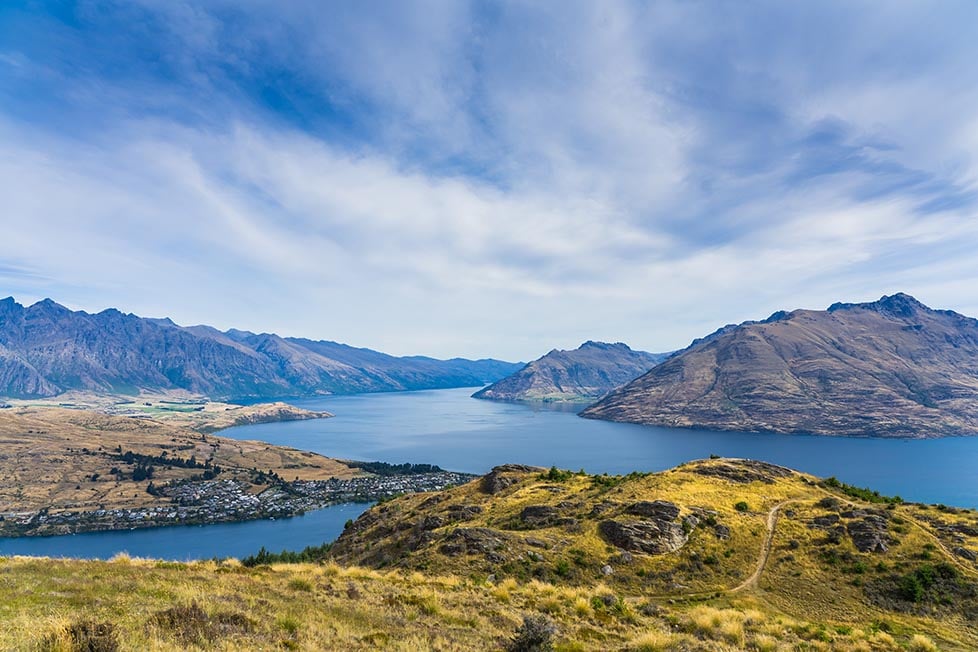
Image: Nic Hilditch-Short
Summer is warm and sunny with very little rainfall so it’s perfect for outdoor enthusiasts. Activities like surfing, hiking, SUP’ing, bungee jumping, and canyoning are some of the favourites. I can recommend the Shotover River: Extreme Jet Boat Experience, it’ll get your heart racing that’s for sure.
The downside, unfortunately, is that many tourists visit during summer so accommodation prices can be high and activities can sell out quickly.
Winter is the perfect season to hit the slopes as a skier or snowboarder as the mountains are covered in snow. The downsides to winter are that it can get bitterly cold, the days are short, and accommodation and activities are expensive.
The shoulder seasons are some of the quietest and cheapest times to stay in Queenstown, but the downside is that some activities are either not running or have shorter operating times.
Best Time to Go to Auckland
The city of Auckland, known as the “city of sails”, is located on New Zealand’s north island and is based around two large harbours. It is a year-round destination that is well known for its sailing experiences and has hosted the America’s Cup event in the past.
Auckland also benefits from a beautiful sub-tropical climate so there’s never really a bad time to visit the city. Again, your decision on the best time to visit the city will depend on three things – the weather, the crowds, and the prices.
Summertime is perfect for outdoor activities like hiking, camping, kayaking, or even a visit to one of the local New Zealand wineries. Auckland is built on 52 volcanoes (don’t worry, none of them are active!) but it means there are plenty of adventures to be had exploring the ones near you.
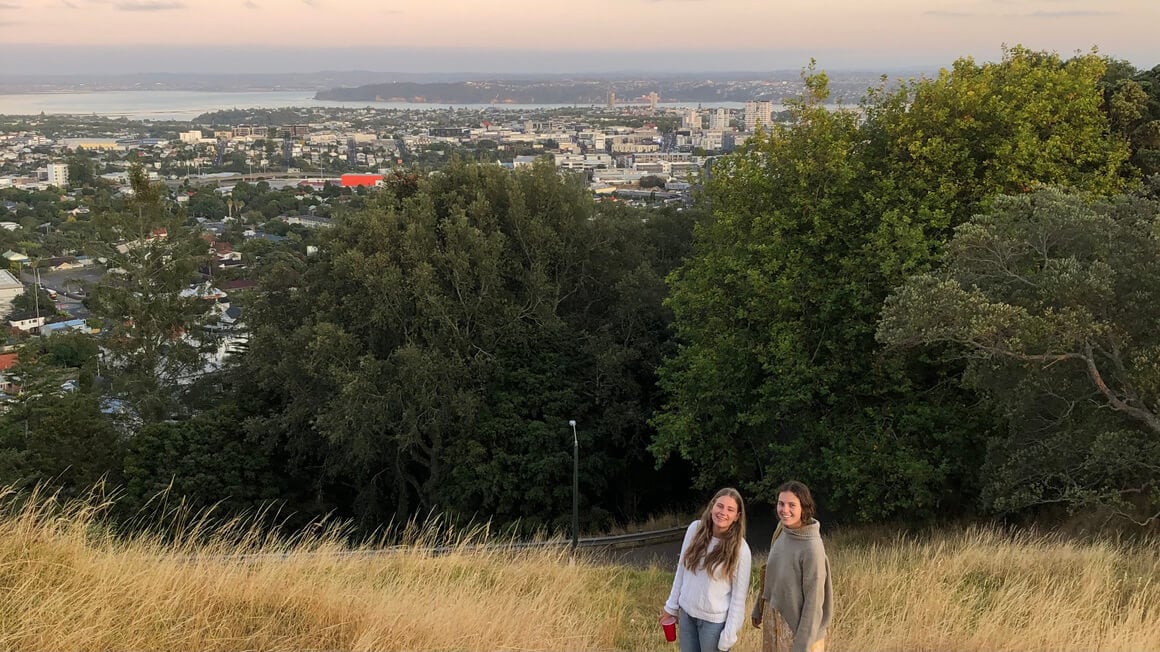
Photo: @danielle_wyatt
The downside, again, is that summer falls within the busiest times of the year which coincides with high accommodation rates, car rental prices, and flights. This makes staying in Auckland pretty expensive during this period.
Wintertime in Auckland consists of mild temperatures, minimal rain, and cultural activities. Visiting the volcanic Rangitoto Island and Mt Eden, the Auckland Museum, and culinary tours are popular during winter. Prices are also at their lowest which is a huge draw-card for this time of the year.
Best Time to Go to Christchurch
The city of Christchurch is located on the east coast of New Zealand’s south island. It is the largest city on the island and is known as “the garden city” because of its large number of parks and trees.
Summertime in Christchurch sees warm air and sea temperatures and little rainfall. The city really is in full swing during summer with many wine festivals, outdoor activities, and beach days for the taking.
While it can be the most expensive time of year, booking in advance can help to reduce costs. The city is also bustling with people so things can get a bit crowded during summer.
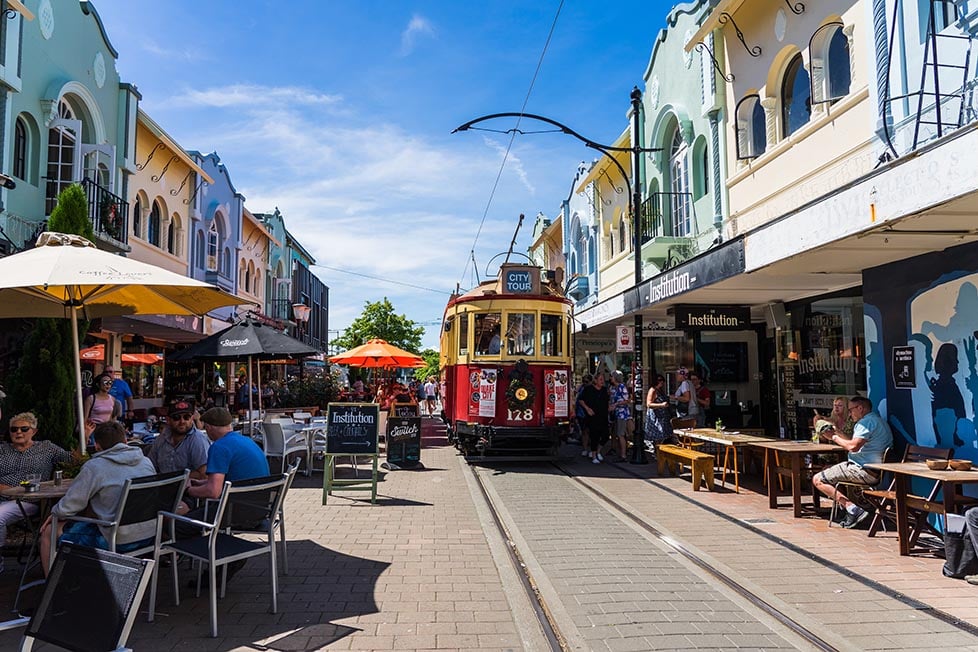
Image: Nic Hilditch-Short
Wintertime in Christchurch can get quite chilly during the day and especially at night, but there are many sunny days too.
The region usually receives a fair amount of snow on the higher reaches making skiing and snowboarding popular winter activities along with whale watching. Prices are usually at their lowest in the city, although the ski resorts can be pricier as it is their busy time.
Spring is, however, one of the best times to stay in Christchurch. The weather starts to warm up, it’s less crowded, and there’s even still snow around. The city really starts to come alive again after the winter and it’s the perfect time to explore.

Stash your cash safely with this money belt. It will keep your valuables safely concealed, no matter where you go.
It looks exactly like a normal belt except for a SECRET interior pocket perfectly designed to hide a wad of cash, a passport photocopy or anything else you may wish to hide. Never get caught with your pants down again! (Unless you want to…)
Hide Yo’ Money!Best Time to Visit New Zealand for Parties and Festivals
The deep-rooted Maori culture of New Zealand has blended with European cultural aspects over time to form a somewhat hybrid modern-day culture. These festivals that take place each year aim to both celebrate and preserve this rich culture and heritage.
As a tourist, it’s almost a crime for you to not partake in one of these events! Now, let’s take a look at some of the top festivals below.
- WOMAD:
The WOMAD (World of Music, Arts, and Dance) festival aims to bring artists together from all around the globe and for them to collaborate in the world on music, arts, and dance.
There is also a focus on celebrating cultural diversity as well as folk and original art forms. You will be treated to some amazing performances from top artists worldwide during the multi-day event.
- Rhythm and Vines:
Rhythm and Vines is only the best outdoor music and camping festival in New Zealand, no big deal! It’s a 3-day long music festival that hosts some of the best international acts that are enjoyed by tens of thousands of people every year. The festival is also the first to welcome the first sunrise each year, given its eastern location.
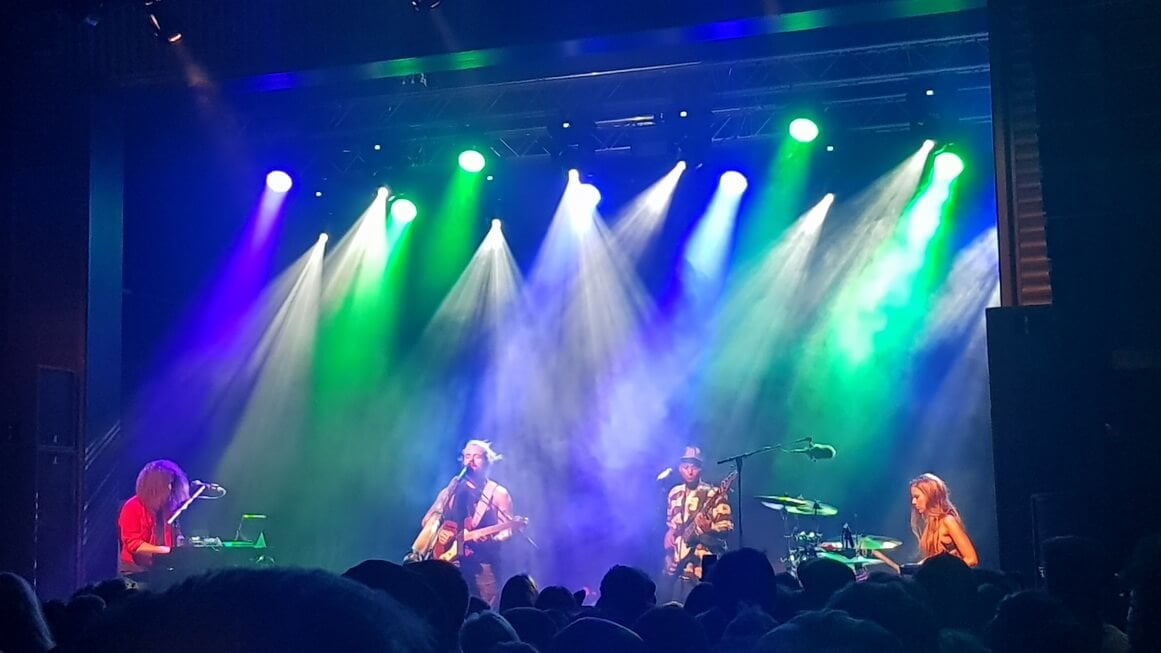
Photo: @Lauramcblonde
- Rhythm and Alps:
The Rhythm and Alps festival takes place in the picturesque town of Wanaka and is a celebration of music and light. It’s an epic mix of bands and DJs and the camping facilities are epic. It’s always a highly anticipated event each year and one of the favourite ways to welcome the new year.
- Marlborough Wine Festival:
The Marlborough Food & Wine Festival is one of the favourite wine events for oenophiles that takes place at Brancott, one of the region’s oldest wineries. There are no less than 40 wineries that take part in the festival and treat attendees to their best vino. There’s also live music and delicious local cuisine to complement the wines.
- Hokitika Wildfoods Festival:
Hokitika Wildfoods festival is centred on trying, well, wild foods from the West Coast of New Zealand. The aim is to get you to try something new, exciting, and even a bit daring.
You can expect dishes such as whitebait patties, smoked salmon, game meats, marinated tuna, and even traditional Maori hangi. Together with live music, it’s a real not-to-be-missed event.
- World Buskers Festival:
The World Buskers Festival is one of the more unique festivals that happens every year in Christchurch. You can expect the likes of visual artists, magicians, contortionists, comedians, dancers, and musicians all busking their pitches to the crowd.
- Auckland Lantern Festival:
The Auckland Lantern Festival takes place in Albert Park and pays respects to the Chinese New Year. The 4-day event is comprised of lanterns, fireworks, and traditional Chinese rituals, dances, and music performances. There’s also delicious traditional Chinese cuisine served throughout the event.
FAQs About The Best Time To Visit New Zealand
Here are some questions people often ask about the best time to visit New Zealand:
Don’t Forget your New Zealand Travel Insurance
Unfortunately, things can go wrong when you least expect it. This is why good travel insurance is essential before you head on your trip to New Zealand.
ALWAYS sort out your backpacker insurance before your trip. There’s plenty to choose from in that department, but a good place to start is Safety Wing.
They offer month-to-month payments, no lock-in contracts, and require absolutely no itineraries: that’s the exact kind of insurance long-term travellers and digital nomads need.
SafetyWing is cheap, easy, and admin-free: just sign up lickety-split so you can get back to it!
Click the button below to learn more about SafetyWing’s setup or read our insider review for the full tasty scoop.
Final Thoughts on The Best Time to Visit New Zealand
New Zealand is home to a shit-load of adventures no matter what time of year you decide to travel. However, if you want to hit the beach, don’t go in July and if you want to ski, don’t go in January. But if you’re just down for any adventure that comes your way, don’t deep it – just book that ticket. You’ll have a blast.
In saying that, I’d recommend heading in February. The weather is beautiful and the masses of us locals usually go back to work (sad for me, lucky for you!) You will avoid the busiest time of year, January, but still reap the rewards of an iconic Kiwi summer. But pack your suncream, this place gets HOT.
Remember, travelling in the peak season is going to be busy and expensive. The fringe seasons are also considered to be the best time to visit New Zealand. And if you’re planning to shred some pow on the slopes, obviously winter will be your best time.
All in all, the best time completely depends on you, your interests and of course, your budget. Whether you’re an avid hiker, an adrenalin junky, or love sampling local wine – New Zealand has something for everyone.
Whenever you book, have the best time EVER! We Kiwis will welcome you in with open arms, feed you up with fish and chips and make you never want to leave <3
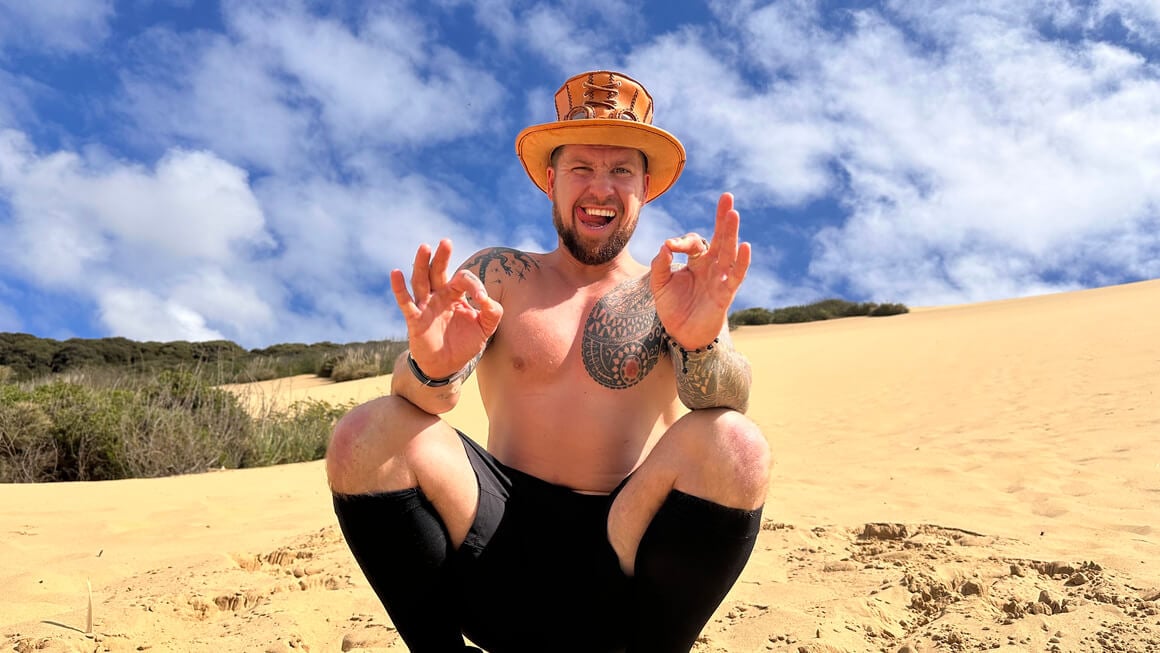
Photo: @willhatton__
- Get off the couch and into the great outdoors with our best NZ day hikes guide.
- Elevate your travel expertise and head on a South Island NZ road trip.
- Check out these travel bucket list ideas that will be sure to make this year the most memorable yet!
- Embrace your backpacker spirit and travel off the beaten path, because… why not?
- Or… dive in the deep blue in the best scuba sites in New Zealand.
- Our in-depth New Zealand packing list has all the info you’ll need for your trip.




